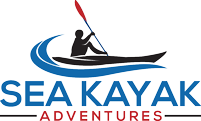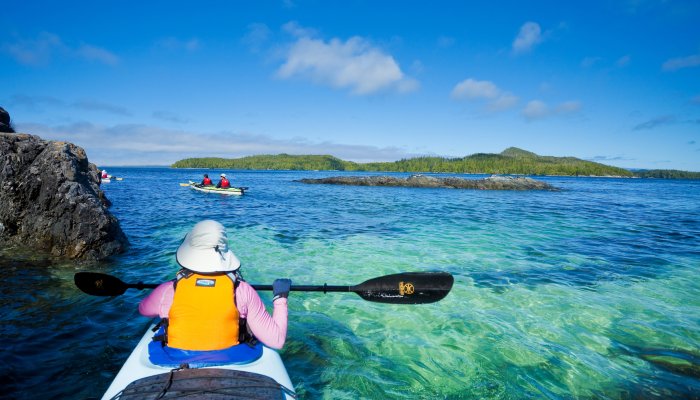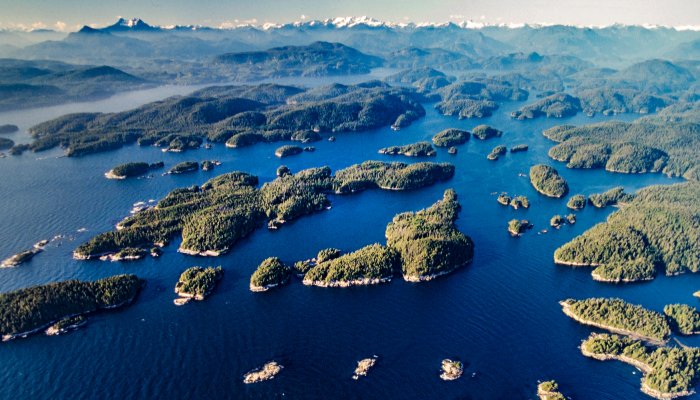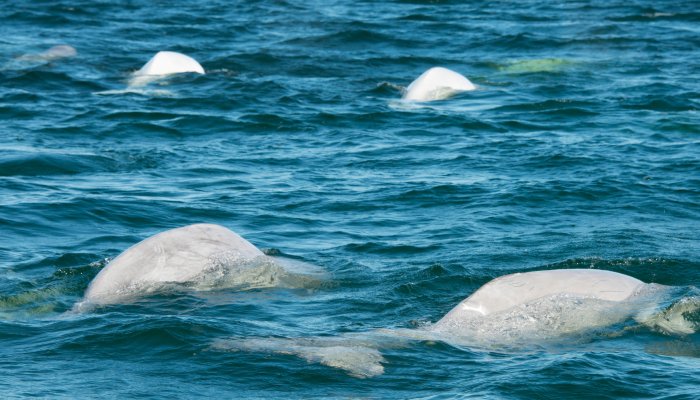Orcas and the San Juan Islands became synonymous for many North Americans due to the widely publicized killer whales that live in these waters. However, many people don’t realize that a much larger population of salmon-eating orcas congregate just a couple hundred miles north of the San Juan Islands, in Vancouver Island’s northern Inside Passage in British Columbia, Canada. These “Northern Resident Orcas” number over 200 strong – more than twice the size of the population found in the San Juan Islands – and with a territory much more feasible to kayaking with orcas. From mid-July through mid-September, most pods congregate within a 40 mile channel following salmon runs in the world’s best-kept-secret orca-viewing site: Johnstone Strait. The strait is only 3 miles wide at its largest point, making it a perfect venue to camp and kayak with killer whales. (This is far easier than trying to find orcas among a group of scattered islands).
Orca researchers have studied this unique part of Vancouver Island’s Inside Passage for many years. Much of scientists’ present orca knowledge derives from research in these waters. Michael Bigg, the “founder” of modern killer whale research and the inventor of dorsal fin identification methods, centered his research in this area. Johnstone Strait still hosts one of the world’s premiere orca research facilities: OrcaLab, founded in 1970 by Jim Spong. The esteemed Alexandra Morton also studied orcas in the strait and the nearby Broughton Archipelago for over 30 years, making her the “Jane Goodall of orcas”.
Johnstone Strait also hosts the world’s only orca preserve. Established in 1982, the Robson Bight (Michael Biggs) Ecological Preserve protects unique killer whale “rubbing” beaches. These pebble beaches contain smooth stones on which the Northern Resident pods rub their bellies, probably both for health reasons and because they enjoy the behavior. Only specific beaches are used by these orcas in this way. While Robson Bight is closed except to researchers, we often see orcas while kayaking in the Western end of Johnstone Strait due to its proximity. Read more about kayaking with orcas in this FAQ.
The narrow channel of Johnstone Strait makes for ideal kayaking conditions, with generally calm waters and sheltered beaches. Undeveloped coastal areas and inlets allow for refreshing beauty and exploration, and abundant wildlife sightings make for lifelong memories. Dolphins, porpoises, seals and sea lions dive and leap from the water while bald eagles perform these same maneuvers in aerial currents. Great humpback whales also frequent these waters, a magnificent recovery story and sight so majestic we offer trips devoted solely to their presence.
Sea Kayak Adventures operates carbon-neutral eco-tours and donates to local environmental efforts to continue the preservation of this landscape and its wild inhabitants. We operate under “leave no trace” camping policies, and strictly adhere to all Be Whale Wise procedures so as to best respect the wonderful orcas that draw us here. Join us on a summer tour to kayak with orcas in Johnstone Strait and experience in person why this is the best orca territory on Earth.



